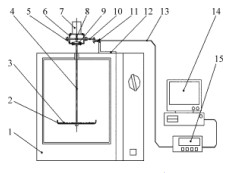
- Shandong Microwave Machinery Co.,Ltd.
- To be the Leader of microwave drying and edible oil refining equipments Manufacturer
Home> Company News> Effect of Different Drying Methods on the Quality of Burdock Chips
- AddressNo. 225, Huangqiao Village, Beiyuan, Tianqiao District, Jinan, Shandong, China
- Factory AddressNo. 225, Huangqiao Village, Beiyuan, Tianqiao District, Jinan, Shandong, China
- Phone(Working Time)+86 0531 85064681
- Phone(Nonworking Time)0086-15020017267
- Fax+ 86 0531 85064682
Effect of Different Drying Methods on the Quality of Burdock Chips
2018-11-28 14:32:04
Abstract: The drying time, color, shrinkage, microstructure, polyphenol content, flavonoid content and polysaccharide of burdock chips were studied by microwave drying equipment, vacuum microwave, vacuum freezing, hot air combined with vacuum microwave, vacuum freezing and vacuum microwave. The influence of indicators such as content.

The results show that: hot air, vacuum microwave and hot air combined with vacuum microwave drying, the product has large color difference, serious shrinkage, and more nutrient loss, and the product quality is obviously lower than other drying methods. The vacuum freezing combined with vacuum microwave drying product quality is close to vacuum freeze-drying, and the internal porous structure makes the product hardness and brittleness moderate, the content of polyphenols, flavonoids and polysaccharides is better, and the drying time is shortened by 46%. In summary, vacuum freezing combined with vacuum microwave drying is the most suitable processing method for burdock chips.
Key words: burdock microwave drying; chip; production process; drying method; physical index; nutritional index; quality; drying time;
Arctium lappa L. is a two-year-old herb of the genus Burdock. Burdock is rich in nutrients, and its polyphenols have strong antioxidant, antibacterial, anti-inflammatory, anti-mutation, blood pressure lowering effects; Burdock polysaccharide can promote the proliferation of lactic acid bacteria and bifidobacteria in vivo, and maintain intestinal micro-ecology.
China's burdock is mainly planted in Shandong, Jiangsu, Anhui, Heilongjiang and other provinces. Its sales are mainly exported. However, with the in-depth study of the nutrient composition of burdock, its edible value and medicinal value have been paid more and more attention in China. The fresh burdock root is gray and white, which contains a large amount of fiber, which is easily fibrillated and becomes hollow during the late growth and storage. After fibrosis of burdock roots, the content of cellulose and lignin increased rapidly, which led to further hardening of the structure, which not only affected the taste of food, but also brought difficulties for further processing. At present, the dried burdock products mainly include burdock tea and burdock chips.
Most of the techniques used in burdock chips are vacuum frying, which causes serious damage to nutrients, and the oil is easily oxidized. Long-term consumption is easy to bring health problems. Non-fried and dry-drying mainly includes hot air drying, microwave drying, far infrared drying, freeze drying, and combined drying. Paengkanya and other studies have found that vacuum microwave combined with hot air drying is faster than single vacuum microwave and hot air drying durian, and can increase the brightness value and brittleness value of the product and reduce the shrinkage and hardness of the product.
Chong et al. found that convection combined with vacuum microwave drying can save 50% drying time, while heat pump combined with vacuum microwave drying has small dry shrinkage, small color change, highest polyphenol retention, and strongest antioxidant activity. In the two joint drying methods, the application of vacuum microwave greatly reduces the hardness and brittleness of the product, and the mouthfeel is better. The above studies show that combined drying can effectively improve drying efficiency and product quality compared with single drying method. However, due to the easy fiberization structure of burdock root, the effect of non-fried drying method, especially combined drying method, on dried burdock chips needs further study. .
In this study, hot blast drying, vacuum microwave drying, vacuum freeze drying, hot air combined with vacuum microwave drying, vacuum freezing and vacuum microwave drying were used to dry the burdock slices, and the physical indexes and nutritional indexes of burdock chips produced by different drying methods were analyzed. The differences were discussed to explore the effects of different drying methods on the quality of burdock chips. The purpose was to determine the drying process suitable for the production of burdock chips, and provide theoretical basis and technical support for the comprehensive development and utilization of burdock.
 High efficiency food beverage factory stone paper production line
High efficiency food beverage factory stone paper production line Factory price Fully automatic Machine PP/PS Plastic Sheet Production Line
Factory price Fully automatic Machine PP/PS Plastic Sheet Production Line used deformered bar rolling mill production line
used deformered bar rolling mill production line Manufacturing plant automatic factory puffed sticky rice cracker production line
Manufacturing plant automatic factory puffed sticky rice cracker production line Production Line Pp Ppr Plastic Pipe Making Machine 20-63mm Multi-layer Extrusion Production Line For Water Supply
Production Line Pp Ppr Plastic Pipe Making Machine 20-63mm Multi-layer Extrusion Production Line For Water Supply